
The most important part of every hunt is preparation.
From having the right equipment, placement and scouting to shooting practice, we got your covered!
Learn how hunters like you set up their gear, scout like a pro and determine shot placement to ensure a proper finish to the hunt.
PRO STAFF PACK – KEITH LOVELACE
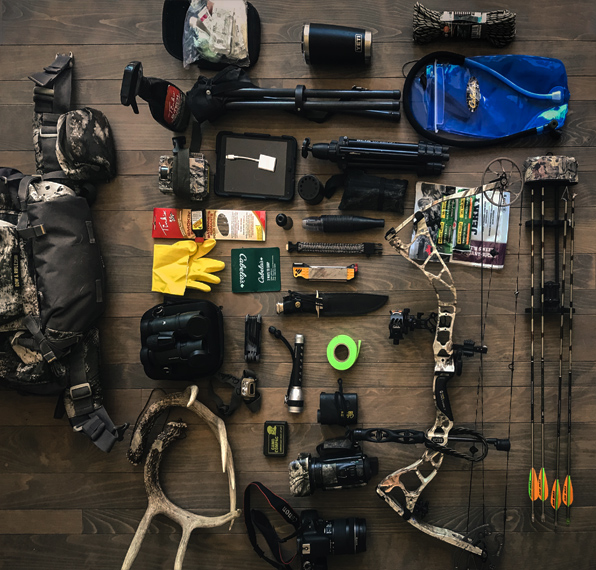
PRO STAFF PACK – KEITH LOVELACE
- YETI® Rambler Tumbler
- Bass Pro Shops® Multipurpose Camo Rope
- Cabela's Intensity 1600 Laser Rangefinder
- Cabela's Instinct™ Xcite Compound Bow
- Coghlan's Paracord Bracelet
- Cabela's LED QUL Headlamp
- Cabela's Bow and Rifle Pack
- Tink's Smokin' Sticks Cow Estrous Elk Lure
- Hydrapak™ Shape-Shift Reservoir – 2 Litre
- Buck Woodsman Model 102 Knife
- Vortex® Diamondback® Binoculars
- Cabela's E-VAC 2CR Tactical Flashlight
PRO STAFF PACK – PAIGE GALEA
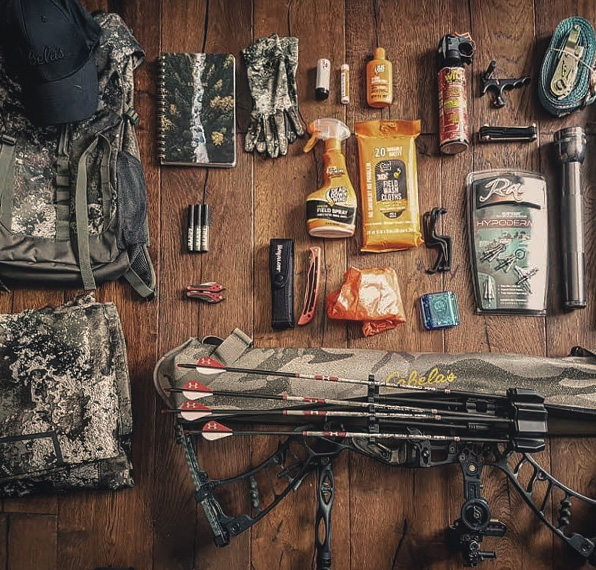
PRO STAFF PACK – PAIGE GALEA
- Cabela's Instinct™ Xcite Compound Bow
- Cabela's Carbon Hunter with 2" XPV Vanes
- Cabela's Multitool
- Dead Down Wind™ Field Spray
- Dead Down Wind Field Washcloths
- Cabela’s Men’s Performance Cap
- Cabela's Bow and Rifle Pack
- Cabela’s Men’s Lightweight WINDSTOPPER® Gloves
- Bass Pro Shops® 40-Lumen LED Pen Lights Two-Pack
- SHE® Outdoor Women’s Performance Rain Jacket
Scouting
“With any form of hunting, scouting is absolutely paramount. Most successful hunters will spend as much or more time scouting as they do hunting. It doesn’t matter how well you’re prepared if there’s no game in the area.”
– Keith Lovelace, Cabela's Canada ProStaff

SHOT PLACEMENT
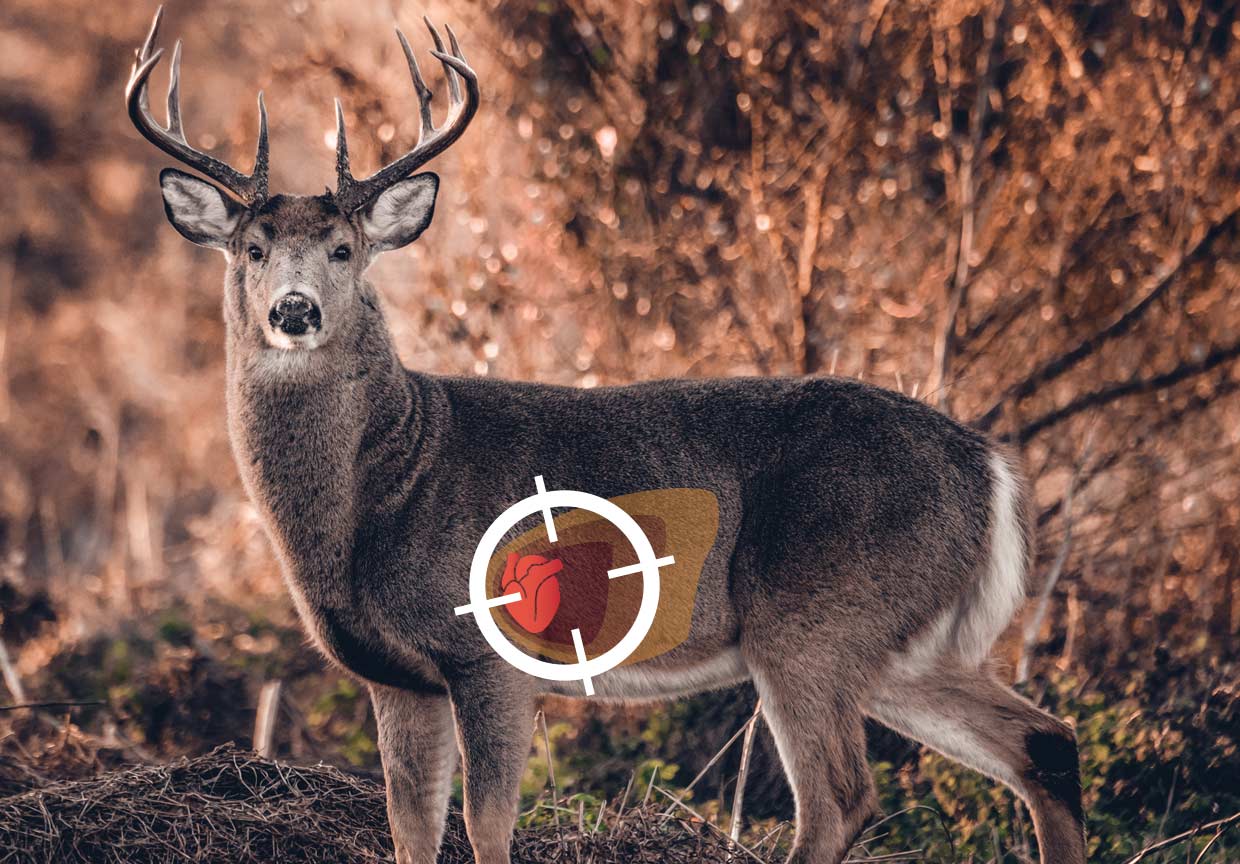
Broadside – Lungs, liver, heart
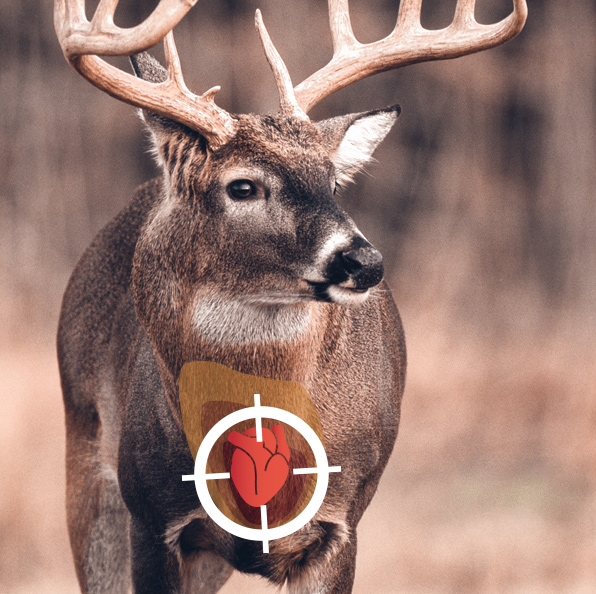 Front – Heart
Front – Heart
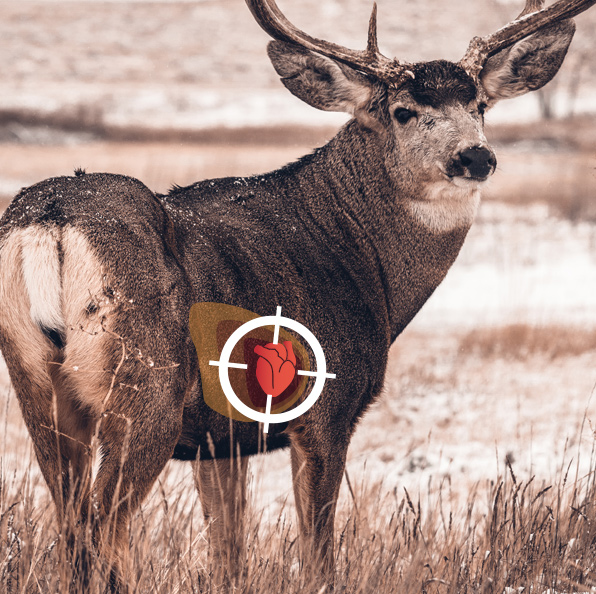 Quartering – Heart
Quartering – Heart
In-The-Field Prep
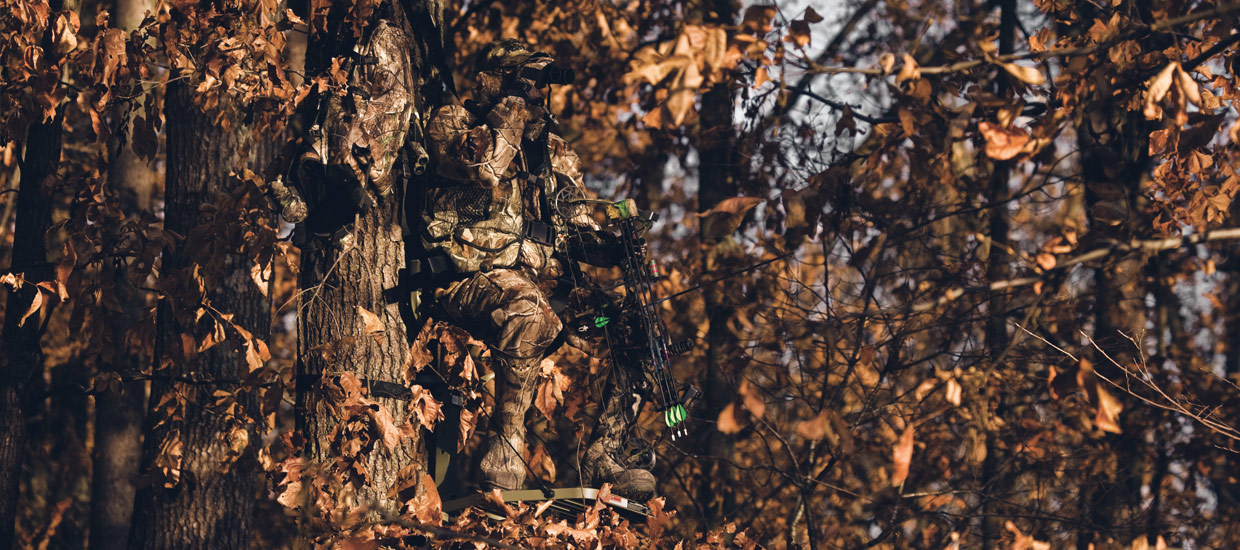
Planning Your Hunt
If you're not hunting a familiar area, take some time to visit your local land maps store and get a print out of your desired public land spot. Make notes of trails, scat, tracks and rub marks. Set up trailcams ahead of time to confirm theres action and to map patterns where you plan to hunt.
Setting-Up Tree stands
Don’t hang the stand too high. Tree stands are meant to get you off the ground and out of sight. Going too high adds additional risk to your hunt. Keep your shot placement and stability in tact by going up about 15–20 ft.
Food Plots for Deer Hunting

Food Plot Basics
Food plots are one of the most popular topics amongst white-tail deer hunters, as they require extensive research and scouting. Plan your hunt well in advance by checking out prime locations for food plots, hybrid basemaps, and entrance and exit routes on OnX Maps. Your first step is to select the hunting property and identifying its water resources, boundaries, and wooded areas. Ensure you have easy access to equipment from the location.
Things to Consider Before Making a Food Plot
Three main factors to consider before finalizing your food plot and starting the process:
- Test the Soil: Buy a pH testing kit and check the pH levels in the soil. Having proper pH levels and adequate sunlight will help your food plot grow.
- Setting up the Plot: Get rid of weeds and unwanted grasses that fight for the sunlight. Before continuing to work on the plot, apply an herbicide a week or two in advance. When the weeds wilt, churn and break the ground to the needs of your planting. After tilling the soil, add fertilizer.
- Plant Your Food Plot: Consider what and when you will be planting. Get the right mix: some crops are annual and need replanting, while some are perennials. Maintain your crops with weed control, mowing and fertilizer if necessary.
Tip: Remember to plant your seeds according to the crop guidelines. Avoid covering them with too much dirt and press the seeds into the soil using your off-road vehicle.
The Best Food Plot Shapes
While choosing a suitable location, plant type, and plot size are vital. Deciding on the right plot shape will prove effective and successful.
3 Small Food Plot Structures for Getting Deer into Range
- The Field Goal: Create a “U” shaped plot to attract deer with a field goal plot, and position yourself at the bottom. Add taller foliage or brush between the uprights for extra security and to avoid bunching. Shoot from the middle of the crossbar section when the deer walk straight through or travel broadside.
- The Hourglass: The plot has an hourglass shape with a narrow bottleneck in the middle. It is a good strategy for larger bedding areas where it becomes difficult to pinpoint the entry/exit. The bucks prefer a wide entry and slowly move to the middle. To increase your chances of spotting a buck, position your stand at the entrance or in the middle, within the range as they pass through the pinch point.
- The Hallway: The Hallway plot provides secluded feeding for deer and quick bites for bucks. You can adjust your stand position based on travel patterns and wind direction. It works well on a new hunting ground as there is little knowledge of preferred routes. It is versatile, flexible, and wide enough for comfortable buck movement and shooting options.
Shooting Lanes

In thick forest, you'll want to ensure your shooting lines are clear. Find a great spot that requires less disturbance so your deer doesn't get spooked by your handy work.
Baiting Regulations

When it comes to setting up feed/bait and mineral sites, each province's regulations will be different. Make sure to check your local hunting guide for official details.
Advanced Big Game
Elk Hunt
A full-grown bull elk can stand as tall as 9 feet, with antlers extending 4 feet above their head. Don’t underestimate the sheer size and weight of these beautiful giants. Hunting elk can be a challenging, but intensely rewarding experience, provided you have the gear and the know-how to get the job done.
Learn more about elk hunting
Moose Hunt
A bull moose in full spread is one of the most imposing animals in the Canadian wilderness. Taller than a saddle horse, large bulls can weigh over 1300 pounds. Hunters who are lucky enough to take down a full-grown moose are rewarded with a ton of great meat!
Learn more about moose hunting
Bear Hunt
An apex predator of the Canadian wild, black bears can weigh up to 900 pounds and boast impressive speed, agility and sense of smell. Take extra care when hunting these majestic creatures. Those who succeed are awarded a beautiful pelt, meat, and a good story or two.
Learn more about bear hunting

